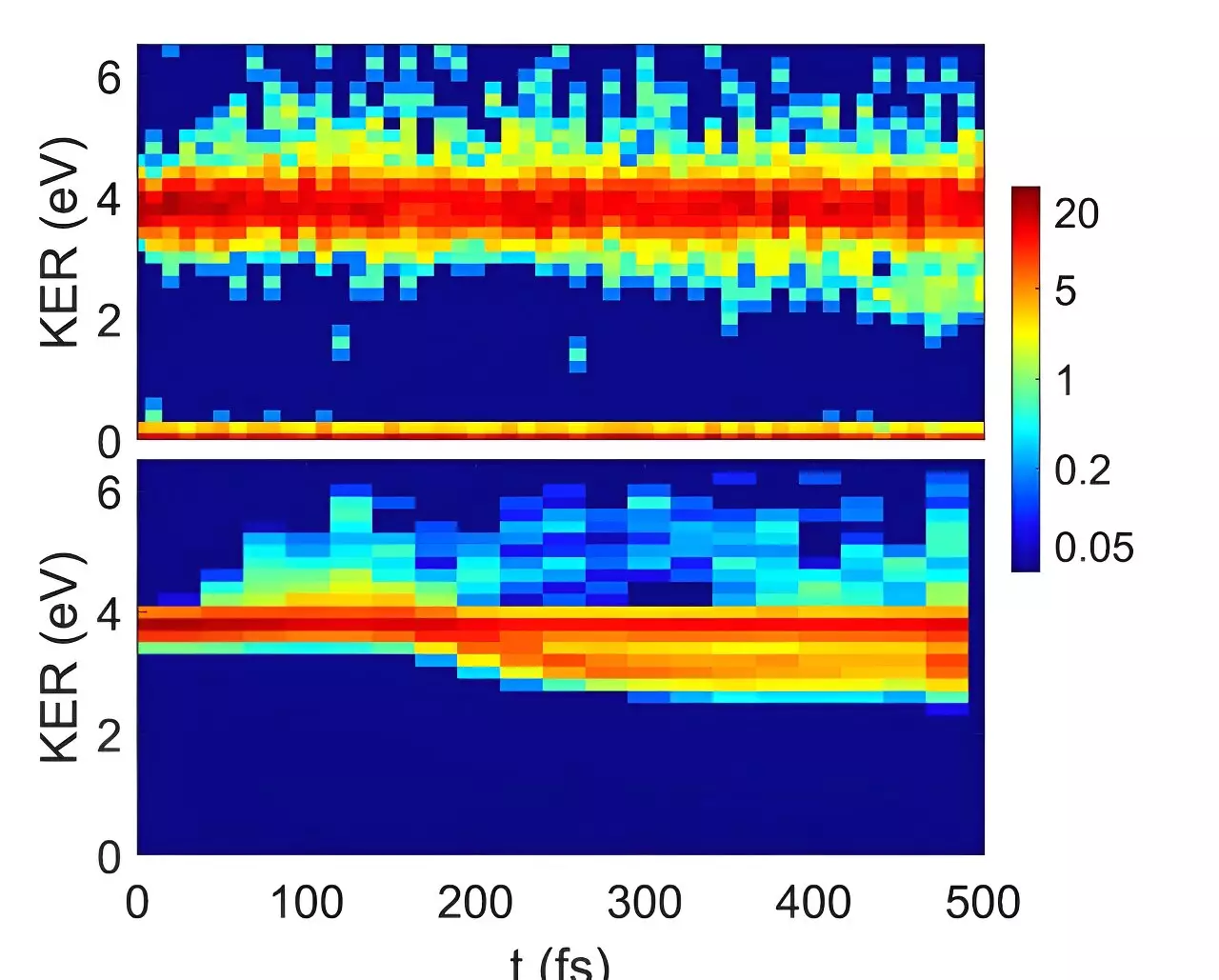A groundbreaking study led by Profs. Daniel Strasser and Roi Baer from The Hebrew University of Jerusalem has shed light on unexpected symmetry-breaking dynamics in ionized carbon dioxide dimers. Published in Nature Communications, the research unveils novel insights into the structural changes that occur when these molecular clusters are exposed to extreme ultraviolet (EUV) radiation.
In typical scenarios, carbon dioxide molecules tend to form symmetrically shaped pairs, with their wave function preserving symmetry even after ionization, as predicted by quantum mechanics. However, researchers from The Hebrew University of Jerusalem, the Max Planck Institute for Nuclear Physics, and the FLASH free electron laser facility at DESY have observed a phenomenon known as symmetry-breaking. This unexpected behavior raises questions about the fundamental principles of quantum mechanics.
By utilizing ultrafast EUV pulses generated by the FLASH free electron laser, the international team of scientists confirmed that ionized CO2 dimers undergo asymmetric structural rearrangement. This symmetry-breaking leads to the formation of CO3 moieties, showcasing the intricate dynamics of molecular behavior under extreme conditions. These findings challenge existing models and open up new pathways for research in molecular physics.
The discovery of asymmetric structural rearrangements and the formation of CO3 moieties in ionized carbon dioxide dimers has significant implications for atmospheric chemistry and astrochemistry. Understanding these processes could offer a deeper insight into the chemical evolution of complex species in cold outer space environments, where such molecular interactions play a crucial role.
Prof. Strasser emphasized the importance of the study, highlighting the power of combining advanced theoretical modeling with cutting-edge experimental techniques. By bridging the gap between theory and experimentation, the researchers were able to unravel unexpected molecular behavior, paving the way for future advancements in carbon dioxide chemistry and planetary processes.
This groundbreaking research was made possible through international collaboration and the utilization of state-of-the-art facilities like the FLASH2 free electron laser at DESY in Hamburg, Germany. The team’s innovative approach not only provides new insights into molecular processes under extreme conditions but also offers potential applications in atmospheric science and chemical synthesis methods.
The study on symmetry-breaking dynamics in ionized carbon dioxide dimers represents a significant milestone in the field of molecular physics. By challenging conventional wisdom and pushing the boundaries of scientific exploration, the researchers have unlocked new possibilities for understanding complex molecular interactions in extreme environments. This research serves as a testament to the power of collaboration, innovation, and a relentless pursuit of knowledge in unraveling the mysteries of the universe.


Leave a Reply